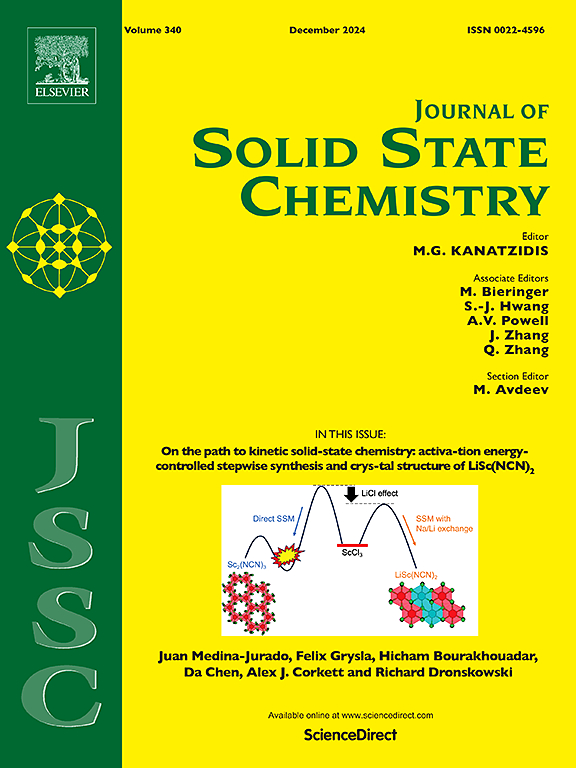Synergistically enhanced selective adsorption of cationic dyes from aqueous solutions using porphyrin-confined zeolitic imidazolate framework
IF 3.2
3区 化学
Q2 CHEMISTRY, INORGANIC & NUCLEAR
引用次数: 0
Abstract
Encapsulation of a free base meso-Tetra(4-carboxyphenyl)porphine ligand (TCPP) into the cavities of zeolitic imidazolate framework (ZIF-8) via the bottle-around-ship (BAS) approach generated an extremely selective reusable biomimetic adsorbent (TCPP@ZIF-8) for the elimination of hazardous cationic organic dyes. Entrapment in the MOF host prevents TCPP aggregation and provides a high surface area and protective environment for better TCPP dispersion, enhancing dye adsorption via electrostatic interaction. The appropriate synthesis of the adsorbent and the stability of the MOF throughout the modification were confirmed by multiple analyses. After being modified with TCPP, the adsorption efficacy of porous ZIF-8 is substantially increased, as seen by the significantly improved methyl violet (MV) cationic dye removal efficiency of TCPP@ZIF-8 (83.46 % and 41.67 mg/g at 10 mg dosage within 15 min) compared to ZIF-8 alone (23.83 % and 11.91 mg/g at 10 mg dosage within 15 min). The kinetic and isotherm studies revealed that adsorption adhered to pseudo-second-order (PSO) kinetics and the Langmuir isotherm, implies that the process is primarily governed by chemisorption and occurs as a monolayer on homogeneous adsorption sites. According to the reusing study, the stability of the adsorbent did not alter during the adsorption process, and the adsorbent could be easily recycled for use in consecutive cycles.

利用卟啉限制的沸石咪唑盐框架协同增强阳离子染料在水溶液中的选择性吸附
通过绕船装瓶(BAS)的方法将游离基中位四(4-羧基苯基)卟啉配体(TCPP)封装到沸石咪唑盐框架(ZIF-8)的空腔中,生成了一种极具选择性的可重复使用的仿生吸附剂(TCPP@ZIF-8),用于消除有害的阳离子有机染料。在MOF宿主中的滞留可以防止TCPP聚集,并为TCPP的更好分散提供高表面积和保护环境,通过静电相互作用增强染料的吸附。多次分析证实了吸附剂合成的适宜性和改性过程中MOF的稳定性。经TCPP改性后,多孔ZIF-8的吸附效率显著提高,对甲基紫(MV)阳离子染料的去除率(分别为83.46%和41.67 mg/g,用量为10 mg,去除率15 min)明显高于单独ZIF-8(23.83%和11.91 mg/g,用量为10 mg,去除率15 min)。动力学和等温线研究表明,吸附符合拟二阶动力学和Langmuir等温线,表明吸附过程主要由化学吸附控制,并在均匀的吸附位点上以单层形式发生。重复利用研究表明,吸附剂在吸附过程中稳定性不受影响,且易于循环利用。
本文章由计算机程序翻译,如有差异,请以英文原文为准。
求助全文
约1分钟内获得全文
求助全文
来源期刊

Journal of Solid State Chemistry
化学-无机化学与核化学
CiteScore
6.00
自引率
9.10%
发文量
848
审稿时长
25 days
期刊介绍:
Covering major developments in the field of solid state chemistry and related areas such as ceramics and amorphous materials, the Journal of Solid State Chemistry features studies of chemical, structural, thermodynamic, electronic, magnetic, and optical properties and processes in solids.
 求助内容:
求助内容: 应助结果提醒方式:
应助结果提醒方式:


